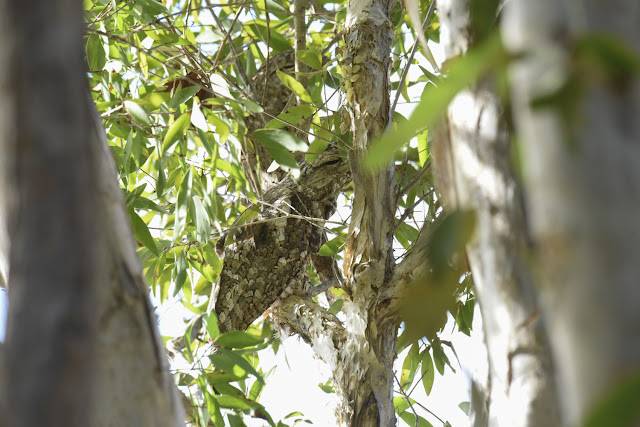Frogmouth - The most Instagrammable bird
Here they are, images of what has recently been recognised as the most Instagrammable bird - the Frogmouths. I have been studying them, especially these Tawny Frogmouths, for over fifteen years, I have never used Instagram, but I agree that they have a special aesthetic appeal.
I first saw the news of their status on the BBC News at: https://www.bbc.co.uk/news/science-environment-56946165 This was an article on a study by K. Thommes and G. Hayn-Leichsenring in the journal i-Perception. They assessed the most Likable bird images using the number of Likes each type of bird scored on Instagram and ranked them by Image Aesthetic Appeal. See the full articles by clicking the clinks. https://doi.org/10.1177%2F20416695211003585
This is an adult female who although wild, would sit on her perch quite happily as I walked about within a few metres of her. They are nocturnal birds, so they rest during the day, sitting quietly on the same perch all day. Not all birds sit so calmly and allow easy photography, but this certainly helps their appeal.
Then of course, there are the super cute fluffy youngsters. They always watch with big wide eyes, front-facing, which is rare in birds and adds an anthropocentric touch. And they have that seemingly down-turned mouth. People will press like to such an image.
Once established as a pair, the adults will often sit on a perch snuggled up close side by side. They fluff up their feathers to keep warm and bask in the sunshine. More anthropocentric association. Of course people press Like to such shots.
There is a catch of course. Most frogmouths do not sit openly posed for photographers, and most photographers are unlikely to see one. For most frogmouths adopt a branch-like pose when they see people approach. They stretch their necks up, draw their feathers in, and stay motionless with eyes closed. Well, they peep through their eyelids, to watch for danger. And isn't their camouflage wonderfully adapted for concealment. How many Likes would this image achieve?
Or who could not admire how such a pair of beautiful birds can bask in the sun in full view of people walking below, yet never be noticed. That is what I appreciate most about them.
For more information on these wonderful birds browse through the other pages that describe their behaviour here on this blog. See the links on the right.
With special thanks to Thommes and Hayn-Leichsenring for bringing one of my favourite birds into the limelight.
Thömmes, K., & Hayn-Leichsenring, G. (2021). What Instagram Can Teach Us About Bird Photography: The Most Photogenic Bird and Color Preferences. i-Perception, 12(2), 20416695211003585.
















































